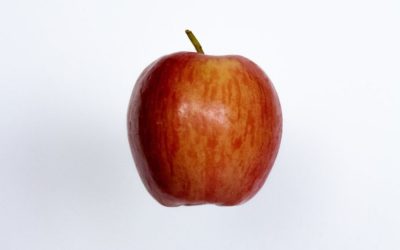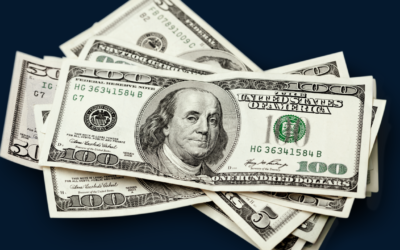Last year, I did an analysis of the Earth Ox 己 丑 year from a thematic approach. I had intended to write an economic analysis as well but chickened out of it because I had a crisis of confidence in terms of whether or not the approach was right. Having had the opportunity to test my hypothesis as to how to evaluate the year with some measure of semi-precision from the ‘birthday’ of the Year (for those who haven’t worked it out, the Metal Tiger is born on the 4th of February 2010 @ 6.49am), this year, I intend to publish my economic analysis. Really!
Anyway, to kick things off, I thought I’d talk about things from a thematic approach first, per how it was done in 2009. But first, you’re probably wondering – what on earth is a thematic approach?
I freely admit, I made that term up (or if I happen to have a swell-headed Avatar, then well, I invented the whole thing lock stock and barrel – you read it here first people!)
The concept behind a thematic approach is to study the Year Pillar AND the chart, and identify themes or big ideas that run through it. As Wikipedia defines it, a theme is
“The idea about life revealed in a work of literature. The message may be about life, society, or human nature. Themes often explore timeless and universal ideas and may be implied rather than stated explicitly.”
Merriam-Webster defines theme as:
“specific and distinctive quality, characteristic, or concern”
It is in a sense, attempting to derive some kind of pattern or trend from the picture the chart and the year pillar yields. Now, this is not pure pictoral approach. Pictoral approach means you derive the imagery of the year/chart. Thematic approach goes one step further and extrapolates themes. But in any case, the picture is the first step towards deriving the theme.
Let’s start with the facts. Here is the chart of the year.
Now, interestingly here, we have a visual image for the chart, that is very in-sync with the visual image of the Year Pillar, which is 庚 寅 Geng Yin.
Notice how it’s all Wood against Metal in EVERY SINGLE PILLAR?
By contrast, in the year of Ji Chou 己 丑 (chart below), the year’s imagery was not hugely in-sync with the visual image of the Year Pillar.
Notice how in Ji Chou, the Pillars DO NOT have a consistent similar theme? Which in a sense, suggests a roller-coaster situation that is highly unpredictable and which fluctuates as the year proceeds. There is however a common theme/idea here and that is the preponderance of Water, indicating it is in essence a very cold year. Might explain the record snowfall that Europe has recently experienced as well.
Anyway, let’s talk about the Year Pillar FIRST, before moving to the Chart. If we were to see the pillar of Geng Yin in pictoral form, it would be this:
The Axe (Geng) chops the Wood (Jia). So from this image, we now attempt to derive an over-riding theme/idea for the Year. And that idea is simple: it is the concept of againstness.
Ya I made up that word too but in essence, the year’s theme is about clash. Antagonism. Disagreement. Going against each other. Inability to agree. Conflict.Drastic measures and action.
Now, how did this idea come about? Both the Axe and the Wood, do not want to strike each other. But yet, they are mortal enemies as it were. One was made to chop the other, and one was made to be chopped. In that sense, although they may wish to be friends, that can never be.
In BaZi, there are 60 Jia Zi, but no one ever said the 60 Jia Zi were all greated EQUAL. Geng Yin is considered a somewhat unfavourable Jia Zi because it is neither a UNITY Jia Zi, nor is it a HARMONIOUS Jia Zi.
A unity pillar is one where top and below confirm each other. Ie: Ji Chou 己 丑.
A Harmonious Production pillar is where the Heavenly Stem, produces or supports the Eartly Branch. Ie: 癸 卯
Or where the Stem and Branch have an affinity ie: Ding Hai 丁 亥
庚 寅 is regarded as a pillar where the Stem attacks the Branch. It is cutting off your legs. It is self-mutilation. Obviously, it is destructive in a sense.
It’s not of course, all bad news. Arguably.
There is an old saying when we look at the Geng Yin and Jia Shen pillars, and that is Geng Metal chops Jia Wood produces Ding Fire. When the axe strikes the tree, sparks are produced. Fire is by and large generally considered a positive element, being one of the two most needed elements in any chart (the other being water). Ding Fire is associated with enlightenment, and the ability to see through the darkness.
This suggests that although yes, there will be conflict, antagonism, self-mutilation, acts that one does that seem to go against one’s self interest (one here referring to nations or governments – let’s think big people) – there is a possibility that at the end of it all, we might just have learned some important lessons.
However, I believe that to actually support the hypothesis that there is hope after all, the whole chart must be considered, and not just the Year Pillar. As much as the year pillar does dictate the year, ultimately, one must look at the entire chart to gain a more accurate snapshot of what the year has to offer.
That is in Part Deux.





Good stuff, can we have more please? 🙂
Hi,
How is it that every pillar in the 2010 BaZi is Wood against Metal? Month and hour pillars do not have Metal! Am I reading incorrectly?
@SD – look at what is next to the Tiger, and what is next to the Rooster. You’re reading too ‘linear’. Look at the picture.
Thanks. I am assuming you are referring to Xin- Yi in the You and Mao branches. Nevertheless, you are correct, in that the overall theme is one of “going against.” I also liked the manner in which you had deduced the “rollercoaster” theme for 2009.
Sorry.i’m new bie here. Please enlighten me.how ding hai pillar have an affinity. As w e know that water counter fire
Ding combines with Ren, which is what is contained inside Hai (Pig). Water counter Fire is the bare basic idea – this is the sophisticated method of perceiving the elements.